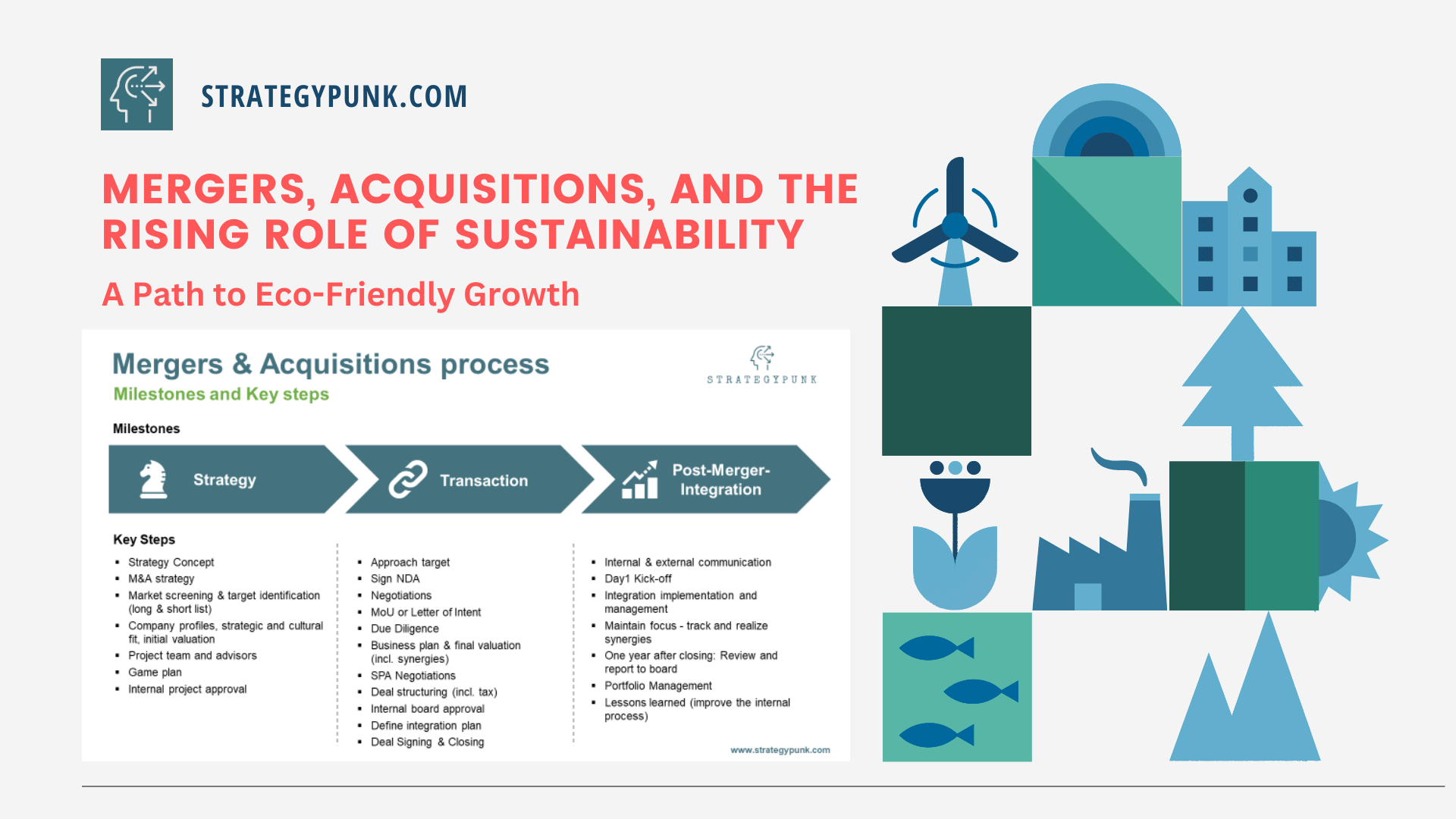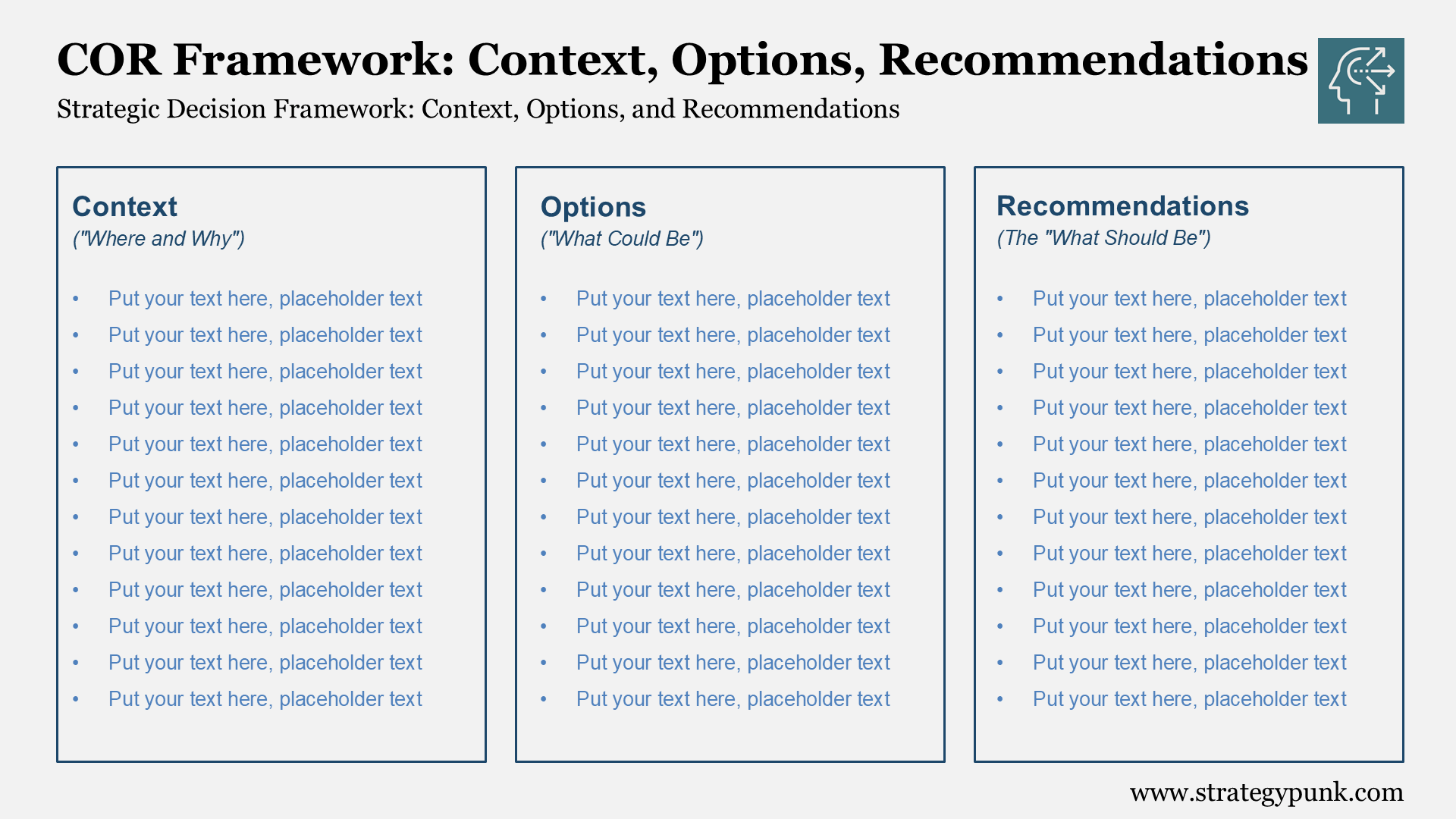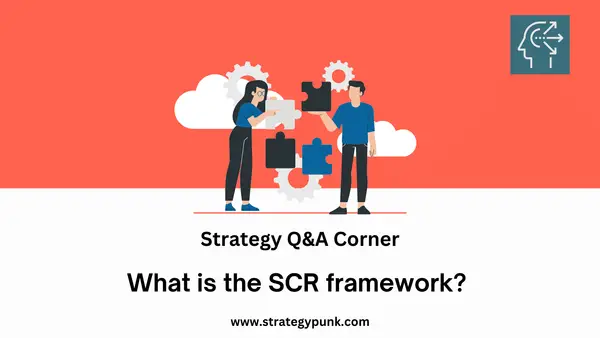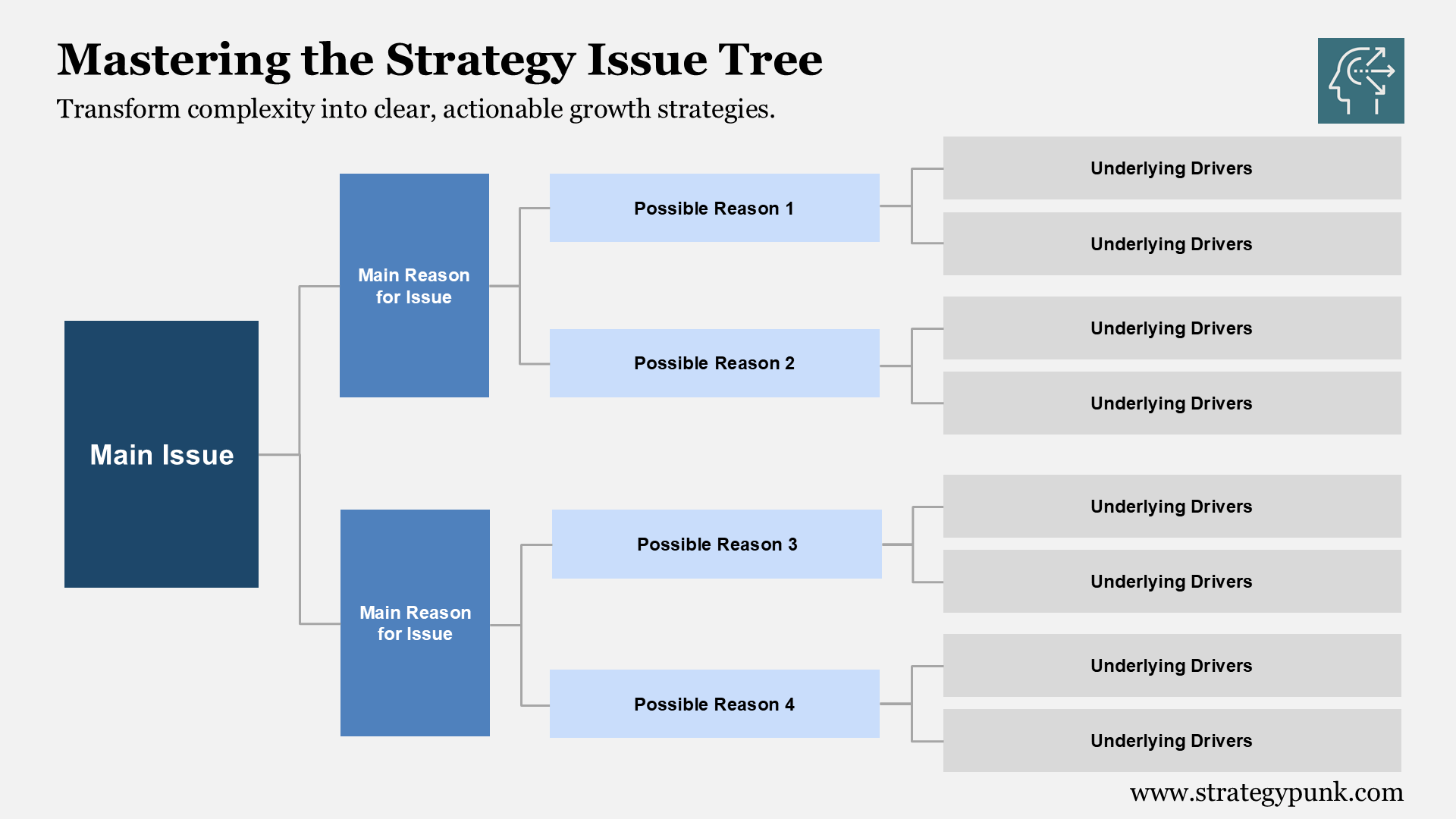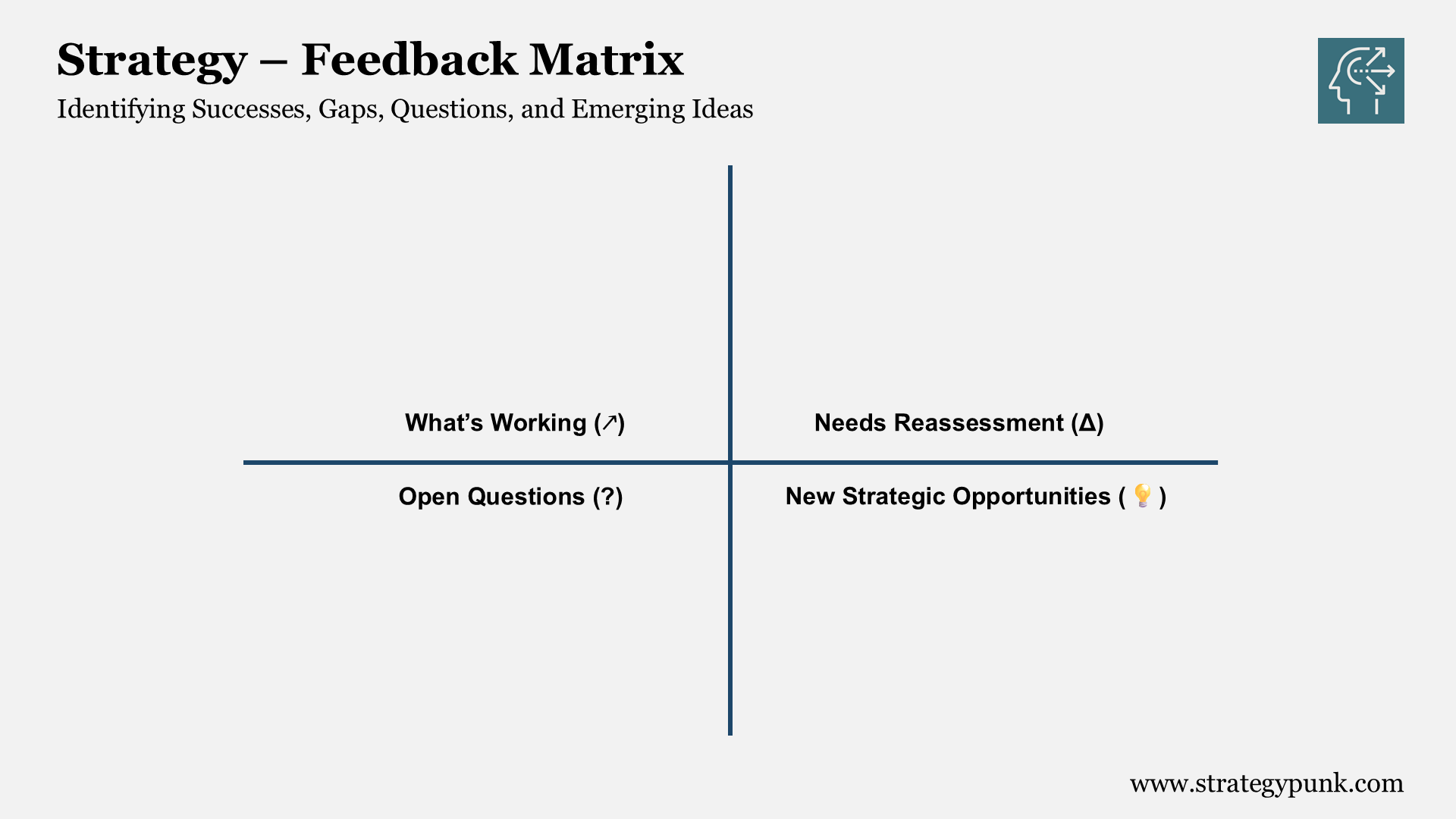Mergers & Acquisitions Process: Guide and free template
Master the art of M&A with our comprehensive Mergers & Acquisitions process guide. Delve into strategic planning, transaction nuances, and post-merger integration. Download our free template for a more structured approach and ensure a seamless merger or acquisition.
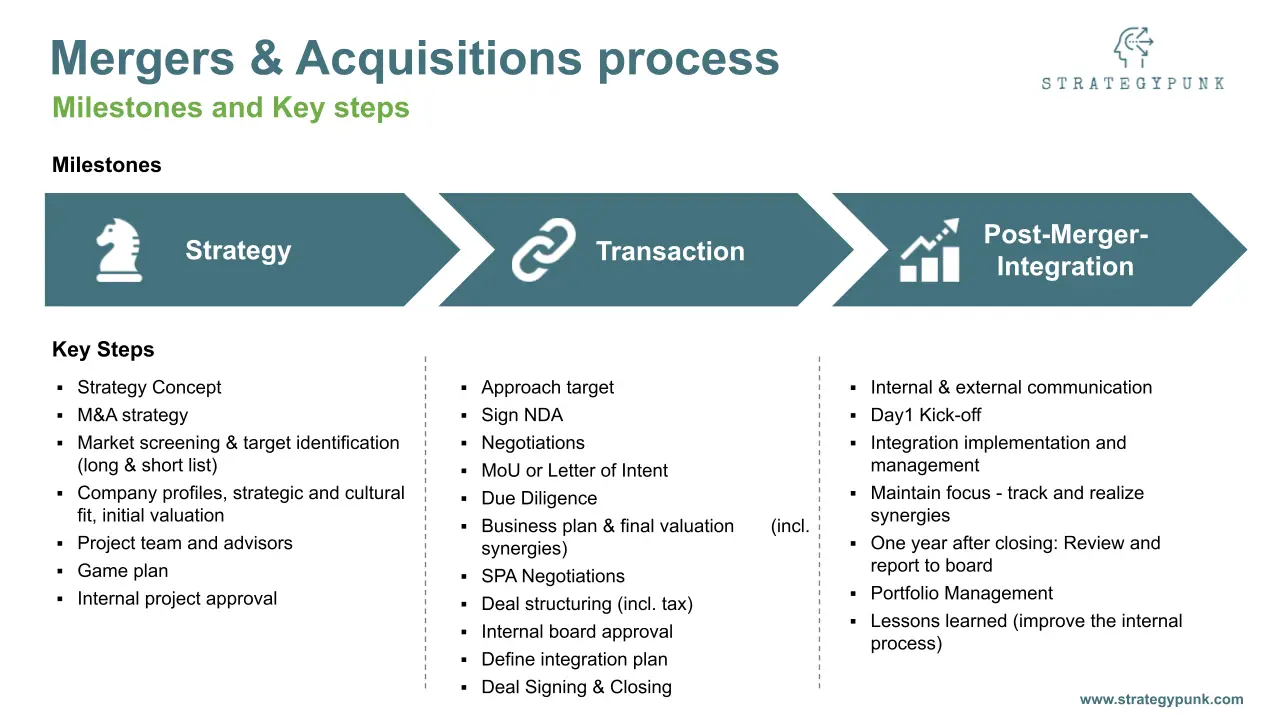
M&A process introduction
Mergers and acquisitions (M&A) are essential growth strategies for companies. Merging with or acquiring another company has numerous benefits, including expanding your business, cutting costs, and increasing efficiency.
However, an M&A deal is challenging, especially if you want to get the best value from it. Before signing on the dotted line, you must know what you’re getting into.
Understanding the M&A process with the significant milestones and critical steps is crucial for the deal's ultimate success. So, how can you succeed with your M&A process? You can learn how to lead and create value in any M&A deal.
For any deal, the seller and buyer must understand the milestones and critical steps of a standard Mergers and Acquisitions process.
This process is a typical buy-side M&A process.
What is M&A?
An M&A is a corporate transaction where two companies combine operations and assets. You will most commonly see two types of M&A transactions: mergers, which occur when two companies with separate operations decide to go into business together (for example, when an online retailer merges with an online grocery store), and acquisitions when one company buys another company.
You can also think of mergers and acquisitions as two ends of a spectrum. Mergers are when two companies decide to go into business together, while acquisitions happen when one company purchases another.
Acquisitions often occur when one firm buys another with distinct offers, but mergers frequently occur between businesses that offer comparable goods and services.
What are the three stages of M&A?
M&A is a complex process that involves many interconnected activities.M&A deals typically involve three stages: M&A strategy, M&A transaction, and M&A integration.
The process aims to create value for shareholders by acquiring an existing business.
M&A Strategy
The overall objective that drives the acquisition process is often called the “why” of the deal. See our M&A strategy template following the link.
M&A Transaction
The purchase of shares or other ownership interests in a company by an existing shareholder.
M&A Integration
We integrate operations, employees, and other resources acquired from an acquisition into the company's business operations.
In addition to these broader activities, there are also specific M&A processes that companies follow at each stage of the M&A lifecycle: Strategy, Transaction, and Integration.
While these processes can vary depending on the size and nature of a particular deal, they will generally follow a similar path as described in the next part.
The three stages of an M&A deal
Stage 1: M&A Strategy - Mapping Out Your Company’s Strategy
The first step of your M&A process is to map your company’s strategy.
Before looking at possible acquisition candidates, defining your goals is essential. This will help you navigate the M&A process and make strategic decisions.
You can do this by answering a few questions:
- What are your strategic goals?
- What do you want to achieve by pursuing an M&A strategy?
- What is the financial goal?
- How does the acquisition fit into your strategic plan?
Now that you know where to acquire from, it’s time to find the right company.
Stage 2: M&A Transaction - Due Diligence and Negotiations
Due Diligence process
Now that you’ve found the suitable acquisition targets, it’s time to dig into due diligence. Due diligence is the investigation that occurs when one company considers purchasing another.
During due diligence, an acquiring company will investigate a potential target company to examine its financial statements, management, operations, and regulatory issues.
You can do this by asking yourself a few questions:
- What do you need to investigate during due diligence?
- What information do you need?
- What are your critical success factors?
- What are your cultural and operational risks?
- What are the key risks, and how will you mitigate them?
You can better understand what to expect during the due diligence process by answering these questions.
Negotiation
M&A deals are complex and typically involve a series of negotiations between the acquirer and the target. The main goal is to strike a mutually beneficial agreement for both parties.
To do this, both companies must put their best foot forward to win over the other party. It is critical for businesses to understand the needs of the other party before entering into negotiations and to ensure that they are prepared for any eventuality that may happen throughout the process.
There are several ways that an acquirer can help to facilitate M&A negotiations.
First, it can lead to identifying and building relationships with targets. Second, it can help negotiate critical terms such as price and payment. And finally, it can help to ensure that all relevant parties are on board before moving forward with the deal.
By taking these steps, you can ensure that your M&A deal goes smoothly from start to finish.
Stage 3: M&A Post Meger Integration
M&A integration can be challenging for any organization, mainly when a deal entails new systems and processes that must be mapped and streamlined.
All too often, businesses need to plan for M&A integration. This can lead to various issues ranging from unexpected costs to poor employee morale. Ensure that you have a clear plan in place for post-M&A integration. Ensure that your integrator is on retainer and that you have the resources in place to support the scale of the integration.
Many variables are at play when integrating two organizations, ranging from cultural differences to operational efficiency.
To ensure your company’s post-M&A integration succeeds, here are seven things you need to keep in mind as you navigate the process:
- Dedicate Resources. Choose members of the integration team.
- Focus on Leadership. Bring in a seasoned, unbiased leader.
- Structure the integration project. Actively Manage the integration process.
- Define essential business processes and systems.
- Make an internal communication strategy.
- Put people first. How will you keep your employees motivated and productive?
- Maintain your cultural advantage. How will you deal with change resistance?
How long is a typical M&A process?
The mergers and acquisitions (M&A) process is lengthy and can take 3 to 18 months, depending on the size and complexity of the deal.
Today, we witness shorter M&A processes.
How long does M&A due diligence take?
M&A due diligence takes time.
Depending on the scale and complexity of the deal, it might take anything from a few days to several months (typically 3 to 9 months). As such, it’s not something you can rush through.
M&A Milestones and Key Steps: Summary
An M&A deal is challenging, especially if you want to get the best value from it. Before signing on the dotted line, you must know what you’re getting into.
M&A is a complex process that can be challenging to navigate successfully. Ensure you are familiar with the following M & A process steps:
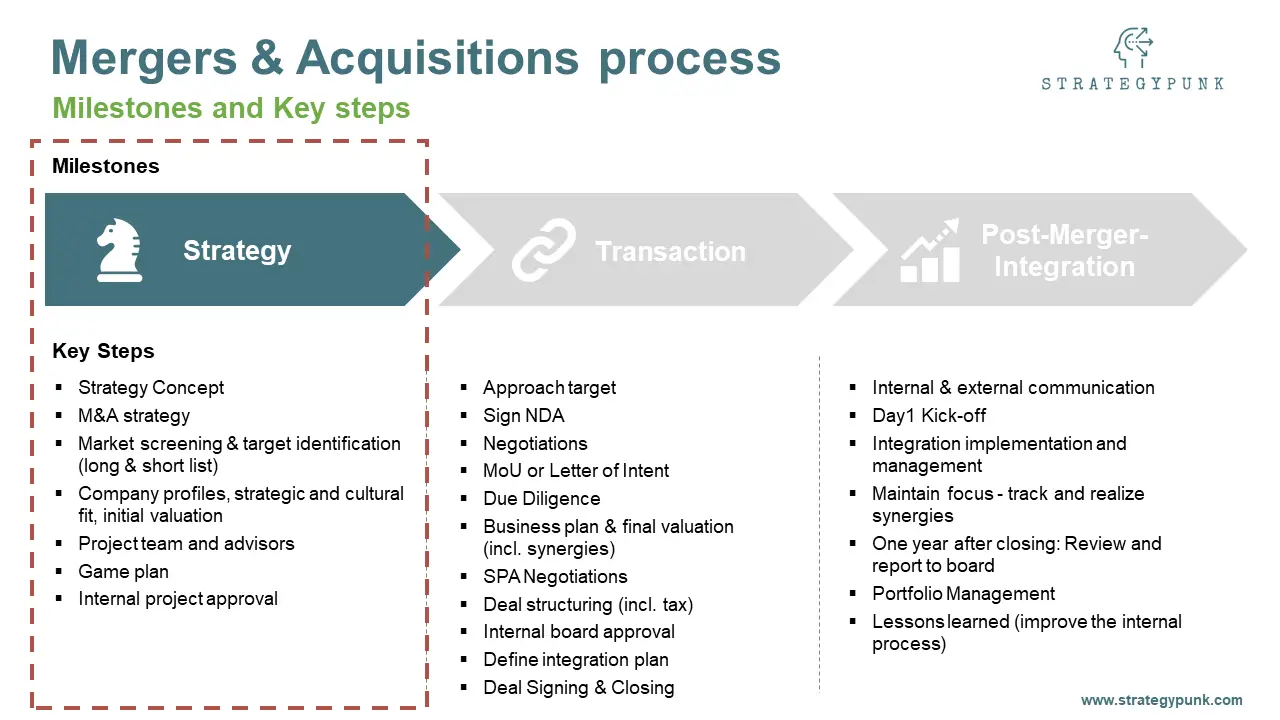
M&A Strategy
- Strategy Concept
- M&A strategy
- Market screening & target identification (long & shortlist)
- Company profiles, strategic and cultural fit, initial valuation
- Project team and advisors
- Game plan
- Internal project approval
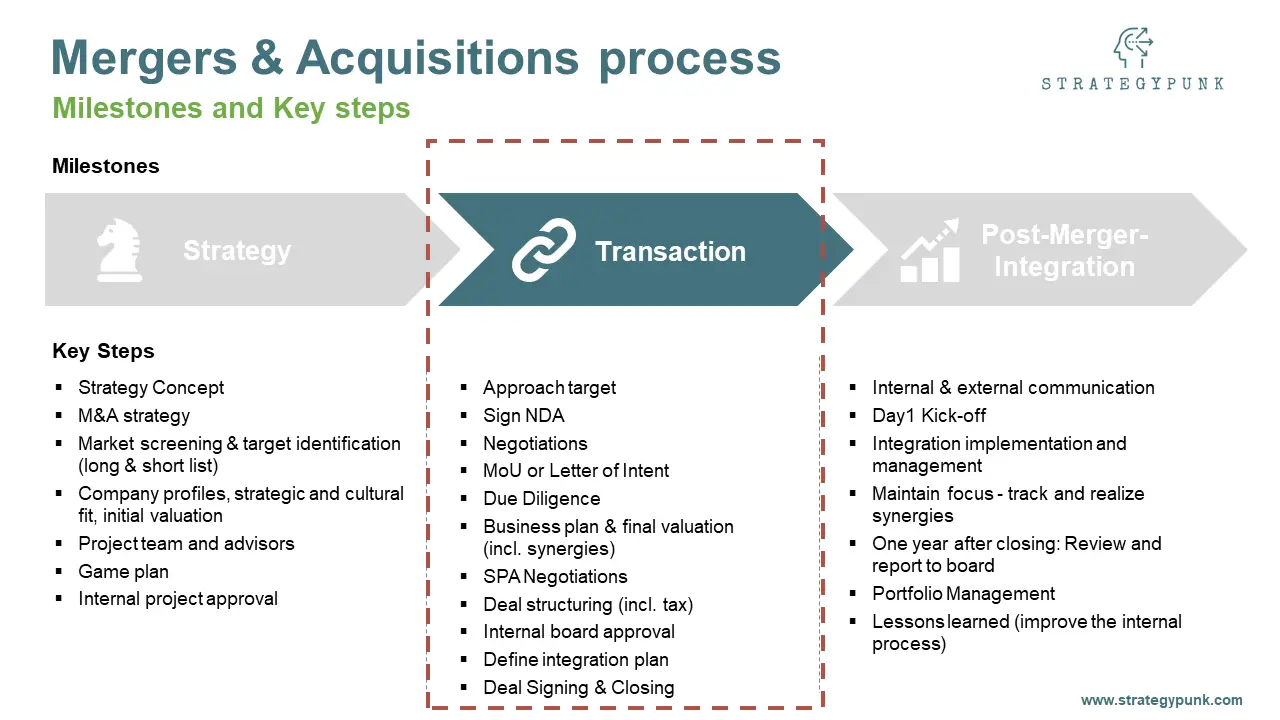
M&A Transaction
- Approach target
- Sign NDA- Negotiations
- MoU or Letter of Intent
- Due Diligence
- Business plan & final valuation (incl. synergies)
- SPA Negotiations
- Deal structuring (incl. tax)
- Internal board approval
- Define the integration plan
- Deal Signing & Closing
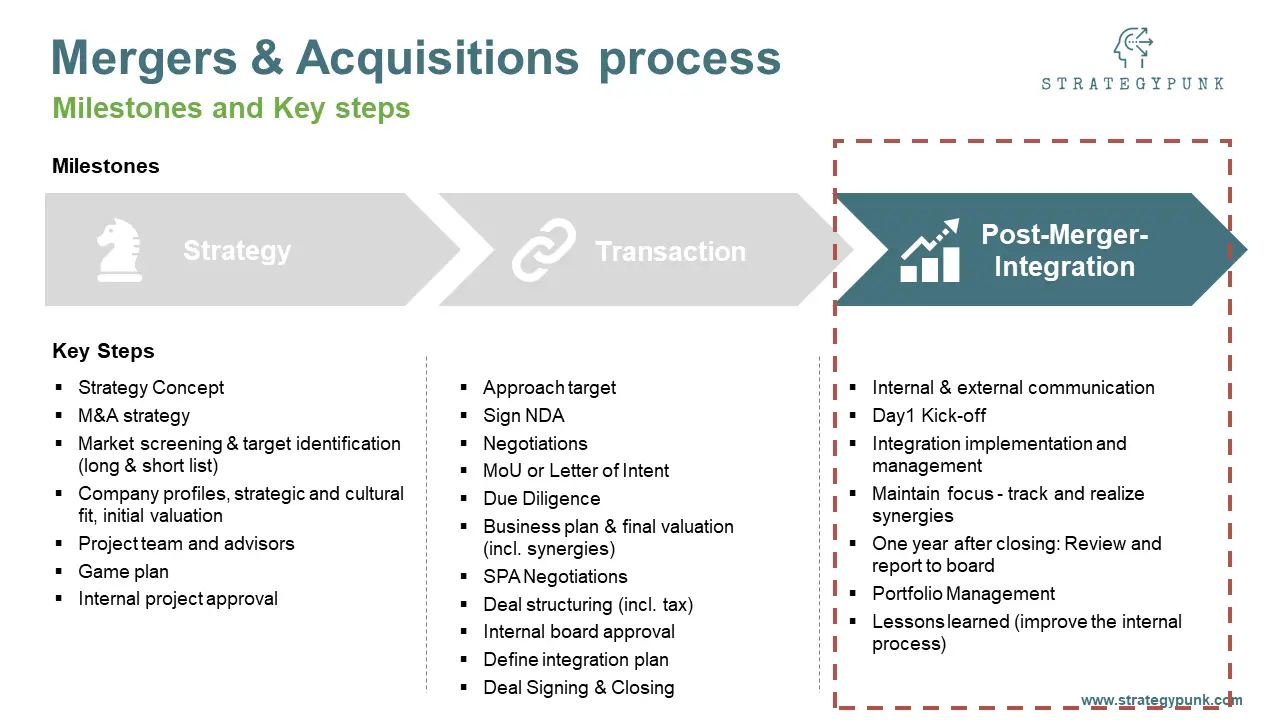
M&A Post-Merger-Integration
- Internal & external communication
- Day1 Kick-off- Integration implementation and management (6 & 12 months project review)
- Maintain focus - track and realize synergies
- One year after closing: Review and report to the board
- Portfolio Management
- Lessons learned (improve the internal process)
Mergers, Acquisitions, and the Rising Role of Sustainability
Environmental, Social, and Governance (ESG) is reshaping M&A, affecting deal valuation, investor demands, regulatory compliance, and integration strategies.
Learn more in our new blog post:
